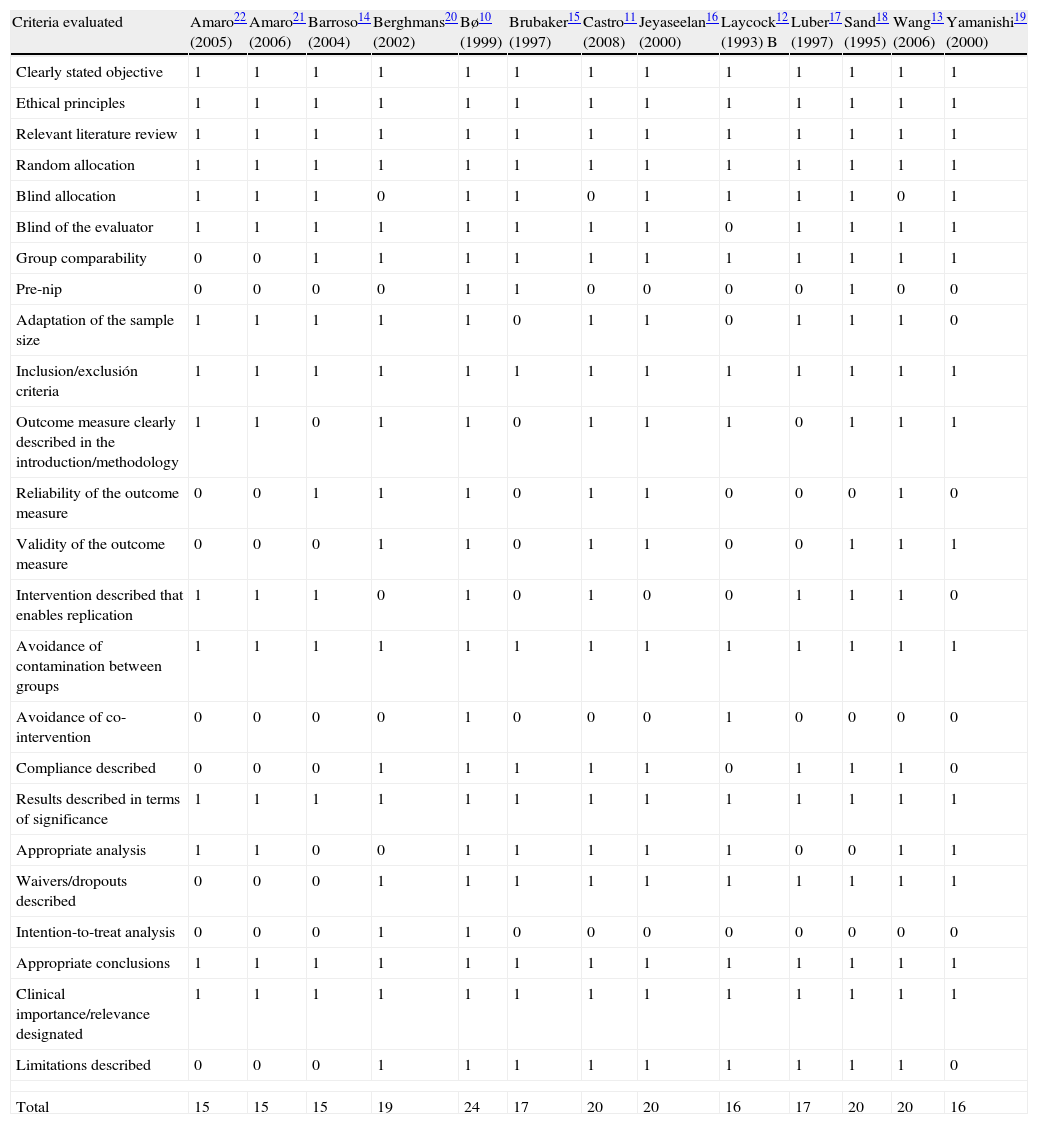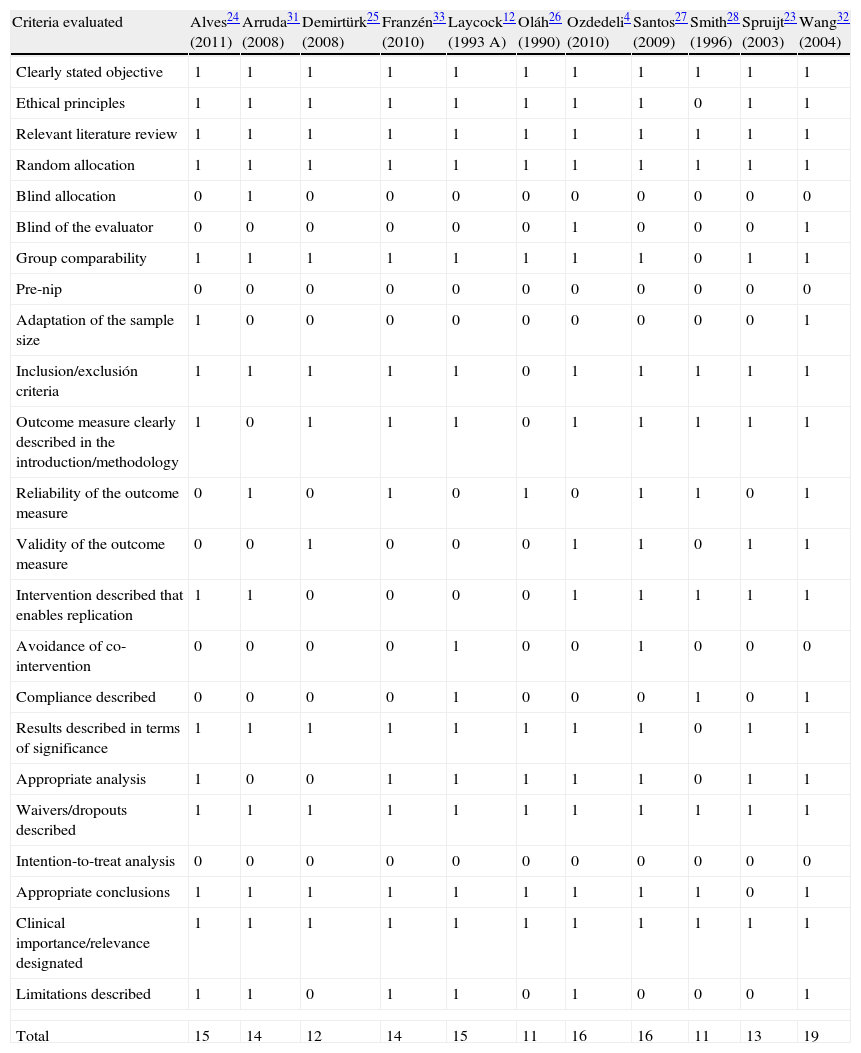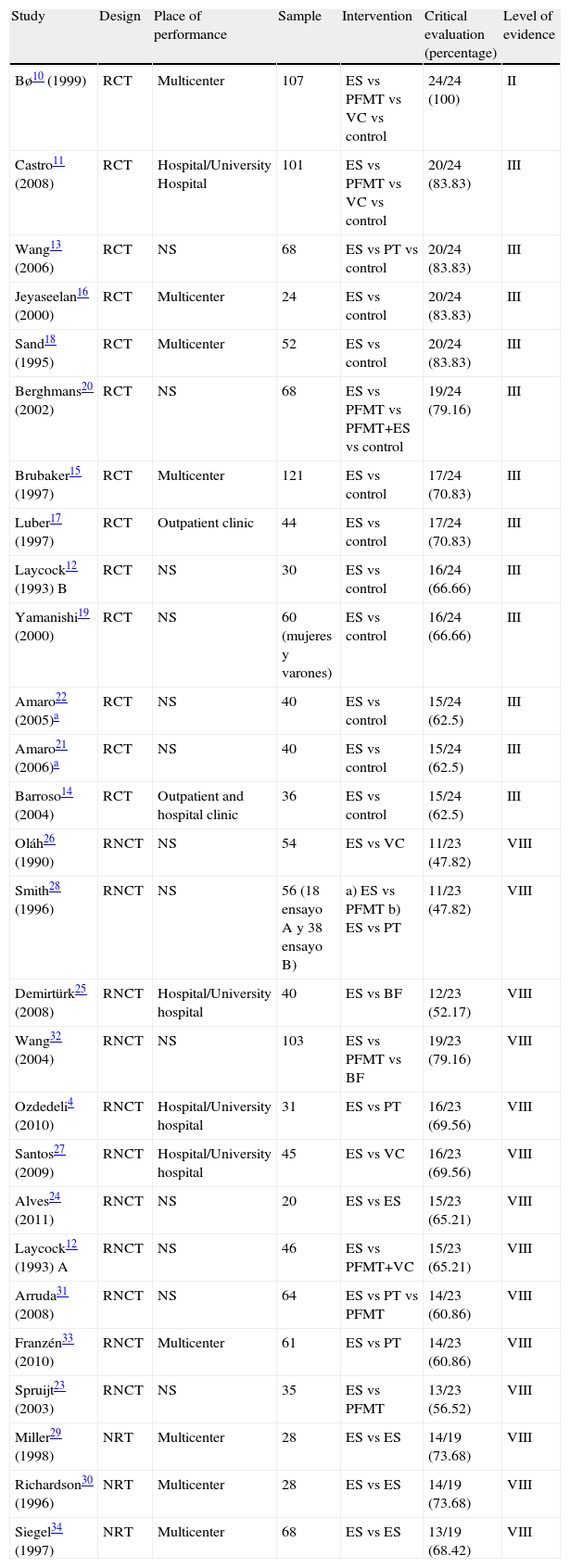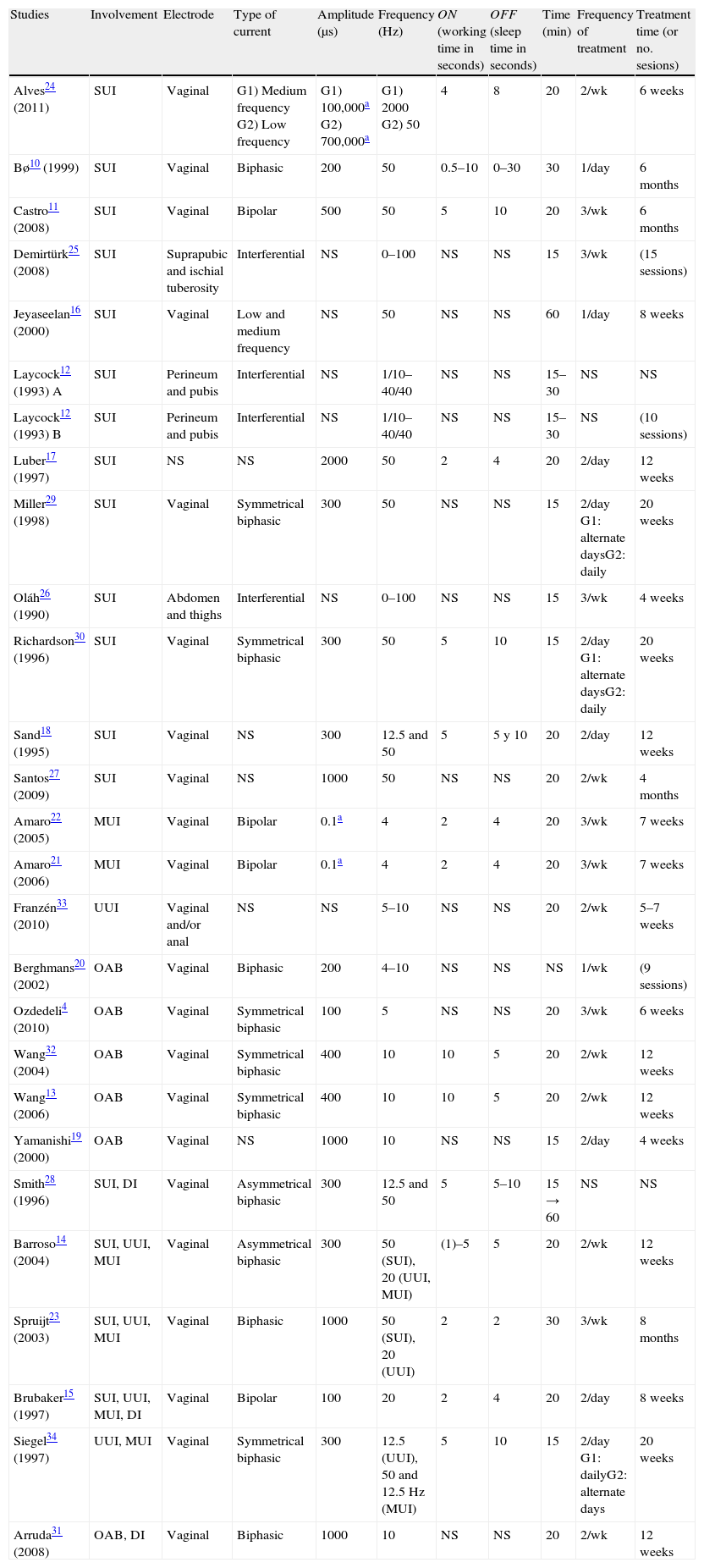Electrostimulation (ES) is one of the techniques employed in conservative treatment of urinary incontinence (UI) and/or overactive bladder syndrome (OAB). Nevertheless, there is controversy in the scientific literature regarding its effectiveness as monotherapy.
ObjectiveTo evaluate the scientific evidence on ES of the pelvic floor in women with UI and with/without OAB.
Evidence acquisitionA systematic review of clinical trials was carried out in the following databases: PubMed, Cochrane, PEDro, Elsevier (Doyma) and EnFisPo (1980–2011). Quality of study registries was evaluated and information was obtained from those that presented the inclusion criteria established in the review.
Evidence synthesisThe 27 clinical trials were included in the review: 13 randomized controlled trials, 11 randomized non-controlled trials and 3 non-randomized trials.
ConclusionMost of the clinical trials conclude that ES is effective in the treatment of UI and OAB in women. However, better methodological quality studies are needed to obtain a higher level of scientific evidence and to know the optimal current modality, type and parameters for each type of UI and OAB.
La electroestimulación (EE) es una de las técnicas empleadas en el tratamiento conservador de la incontinencia urinaria (IU) y/o síndrome de vejiga hiperactiva (SVH). Sin embargo, existe controversia en la literatura científica acerca de su eficacia como monoterapia.
ObjetivoEvaluar la evidencia científica sobre la EE del suelo pélvico en mujeres con IU y/o SVH.
Adquisición de evidenciaSe realizó una revisión sistemática de ensayos clínicos en las bases de datos PubMed, Cochrane, PEDro, Elsevier (Doyma) y EnFisPo (1980–2011). Se evaluó la calidad de los estudios y se extrajo la información de los que reunieron los criterios de inclusión establecidos.
Síntesis de evidenciaUn total de 27 ensayos clínicos han sido incluidos en la revisión: 13 ensayos controlados aleatorizados, 11 ensayos aleatorizados no controlados y 3 ensayos no aleatorizados.
ConclusiónLa mayor parte de los ensayos clínicos concluyen que la EE es eficaz en el tratamiento de la IU y el SVH en mujeres. Sin embargo, son necesarios más estudios de buena calidad metodológica para obtener un mayor nivel de evidencia científica y conocer cuál es la modalidad, tipo y parámetros de corriente óptimas para cada tipo de IU y el SVH.
Artículo
Comprando el artículo el PDF del mismo podrá ser descargado
Precio 19,34 €
Comprar ahora














